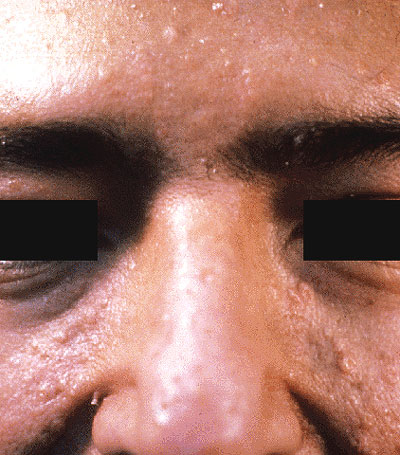|
|
|
Muir-Torre syndrome
Described by Muir, et al, in 1967 and by Torre in 1968, the essential features of the Muir-Torre syndrome are sebaceous tumors of the skin, with or without keratoacanthomas; in association with visceral neoplasms which are often multiple.
The sebaceous tumors are usually on the face or trunk and are usually multiple. While most are sebaceous adenomas, they can include sebaceous hyperplasia, sebaceous epithelioma, and sebaceous carcinoma. Often the same patient will have the complete histologic spectrum of sebaceous tumors.
Some skin lesions have histologic features of both keratoacanthoma and sebaceous proliferation.
The keratoacanthomas can be very large.
Colon cancers, often associated with colonic polyposis, are particularly common. Other neoplasms include tumors elsewhere in the GI tract and tumors of the larynx and endometrium.
Patients with Muir-Torre syndrome appear to have a reasonably good survival despite the profusion of neoplasms.
Even a solitary benign sebaceous gland tumor of the eyelid is a marker for the Muir-Torre syndrome, and its presence warrants review for systemic cancer.
Treatment:
- Long term treatment with isotretinoin appears to be useful in some patients.
- Immunosuppression apparently exacerbates the cutaneous manifestations.

Back to Dermatology Glossary - M Index |
Back to Dermatology Glossary Index
|